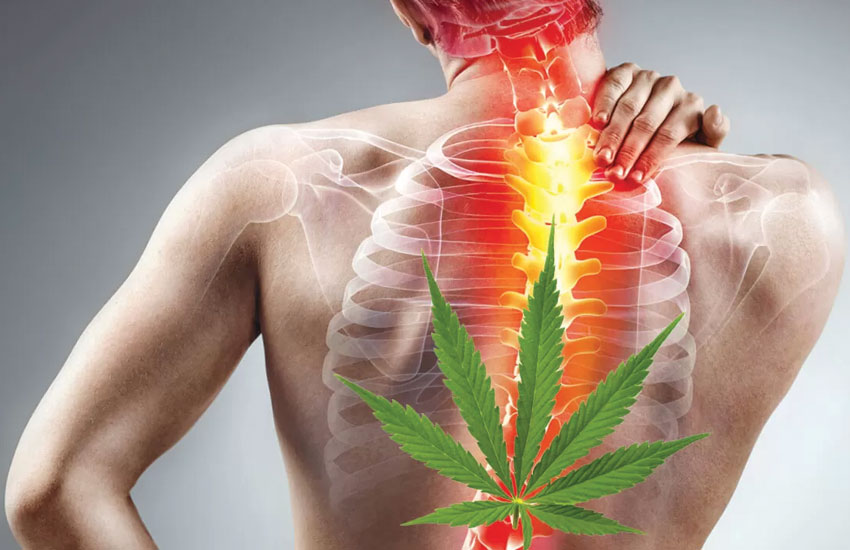Going Natural For Back Pain – Steps To Finding The Right CBD Product

With the rising popularity of CBD for pain management, you may find yourself considering it as a solution, going natural for back pain. While CBD has shown promising benefits, navigating the myriad of products available can be overwhelming. This guide will help you understand the various forms of CBD, evaluate product quality, and select the right option that suits your needs. With the right approach, you can effectively relieve your back pain and improve your overall quality of life.
Key Takeaways:
- Product Type: Understand the different forms of CBD available, such as oils, capsules, and topical creams, to determine which may be most effective for your back pain.
- Dosage: Start with a low dose and gradually increase it to find the most suitable amount that alleviates your discomfort without side effects.
- Quality and Source: Choose high-quality CBD products sourced from reputable manufacturers that provide third-party lab testing results for purity and potency.
Understanding Back Pain
While dealing with back pain can be a frustrating experience, understanding its nature is the first step towards finding relief. Your back comprises different structures, including muscles, ligaments, and vertebrae, creating a complex system prone to various issues. Knowledge about your specific type of back pain, its causes, and potential treatment options can empower you to make informed decisions about your health and wellness.
Types of Back Pain
One way to categorize back pain is by its duration and origin. Whether it’s acute or chronic, understanding the type of back pain you experience can direct you toward appropriate treatments.
| Type of Back Pain | Description |
|---|---|
| Acute Pain | Sudden onset, often due to injury or strain. |
| Chronic Pain | Lasts for over three months and often involves ongoing discomfort. |
| Radicular Pain | Pain that radiates down the leg from the lower back, often associated with nerve damage. |
| Muscle Pain | Dull or sharp discomfort in the muscles, often due to tension or strain. |
| Referred Pain | Pain perceived in a different area than its origin, such as pain in the back stemming from a pelvic issue. |
Recognizing the type of back pain you are experiencing is vital for effectively addressing it. Each type requires different approaches and treatments, making it vital to pinpoint your specific condition for targeted relief.
Common Causes
Among the many factors contributing to back pain, muscle strain, injuries, and underlying medical conditions frequently emerge as culprits. These causes often manifest from everyday activities, such as poor posture, lifting heavy objects, or even prolonged sitting. Age also plays a significant role, as the body naturally undergoes wear and tear over time, leading to potential complications.
A deeper exploration reveals that environmental factors, lifestyle choices, and genetics can also affect your risk of back pain. Engaging in inadequate physical activity can weaken your muscles, while maintaining a sedentary lifestyle may exacerbate discomfort. Additionally, stress can lead to muscle tension, further contributing to back pain. It’s vital to evaluate your habits and make adjustments when necessary to promote your overall back health.
The Role of CBD in Pain Management
Clearly, CBD has garnered significant attention in recent years for its potential role in pain management. As an emerging alternative to traditional pain relief methods, many individuals are turning to CBD to help alleviate their discomfort. Understanding its mechanisms and benefits can empower you in your quest for effective back pain relief and enhance your overall well-being.
How CBD Works
Beside its various formulations, CBD interacts with the body’s endocannabinoid system (ECS), which regulates pain, mood, and inflammation. By binding to cannabinoid receptors, CBD may help modulate pain responses and promote an overall sense of balance. This interaction can lead to a reduction in inflammation, making it easier for you to manage the discomfort associated with back pain.
Potential Benefits for Back Pain
The potential benefits of CBD for back pain are both varied and promising. Many users report experiencing significant relief from chronic pain, improved mobility, and enhanced quality of life after incorporating CBD into their pain management routine. You may find that CBD not only alleviates your back pain but also has a ripple effect on other aspects of your daily life.
Indeed, the versatility of CBD products means you can explore options such as oils, capsules, and topical creams to find what works best for your unique situation. Additionally, studies have indicated that CBD may present fewer side effects compared to traditional pharmacological treatments, making it a safer choice for many. Consider your needs and preferences when choosing a product, as finding the right CBD solution could lead to improved well-being and less pain in your back. Always consult with a healthcare professional before starting any new treatment to ensure it’s suitable for your specific circumstances.
Choosing the Right CBD Product
Keep in mind that selecting the ideal CBD product for your back pain involves understanding the various types available. Understanding the differences can significantly affect how effectively CBD interacts with your body. Below is a breakdown of common types of CBD products you might consider:
Types of CBD Products
| Product Type | Description |
| CBD Oil/Tinctures | Fast-acting and easy to adjust dosage. |
| CBD Capsules | Convenient with pre-measured doses; slower onset. |
| Topicals | Targeted relief applied directly to skin; include creams and balms. |
| Edibles | Delicious options like gummies; discreet but delayed effects. |
| Vapes | Quick absorption, but requires vaping device. |
Perceiving the right type of product for your needs can enhance your experience with CBD. With the variety available, it’s important to think about your preferences, the method of delivery, and how each type might work specifically for your back pain management.
Important Factors to Consider
Around your search for the right CBD product, several important factors will determine its effectiveness for your back pain. Start by examining quality since not all products are created equally. Look for brands that provide third-party lab testing results, as these ensure that you’re using a safe and effective product. Additionally, consider the concentration of CBD; different levels may cater better to your level of pain. Lastly, think about any additional ingredients in the product that may complement CBD’s effects.
- Quality: Verify third-party lab testing.
- Concentration: Determine the strength suitable for your pain.
- Full-spectrum vs. isolate: Consider the types of cannabinoids included.
- Dosage: Look for clear dosing instructions.
- Additional ingredients: Items like menthol can enhance pain relief.
Perceiving each of these factors plays an important role in ensuring you choose a product tailored specifically for your needs. Indeed, understanding the quality, concentration, and form is imperative as you narrow down your options for CBD in alleviating back pain. You want to be sure that you’re opting for products backed by quality assurance, clear dosage recommendations, and effective ingredients that can help optimize the benefits of CBD.
- Research: Always investigate the brand and product.
- Reviews: Look for consumer feedback to gauge effectiveness.
- Consultation: Discuss options with a healthcare professional.
- Legal compliance: Ensure products comply with local laws.
- Allergic reactions: Be aware of any ingredients you might react to.
Perceiving these considerations helps you approach your choice carefully and aligned with personal needs, ensuring a well-informed decision in selecting the right CBD for your back pain relief journey.
Dosage and Administration
Unlike traditional pain relief methods, finding the right dosage and administration of CBD for back pain can be a more personalized journey. It’s important to understand that CBD affects everyone differently, and factors such as your body weight, metabolism, and the severity of your pain can influence how much you should take. To guide you further, check out the article on Unveiling the Power of CBD Oil, which provides valuable insights on proper usage and dosage adjustments to suit your needs.
Recommended Dosages
Behind the dosage of CBD is a growing body of research that supports a varied approach based on individual needs. Generally, starting with a low dose and gradually increasing it until you notice relief is a wise strategy. A common recommendation is to begin with 5-10 mg of CBD per day and adjust as needed, making sure to monitor how your body reacts. Always consult with a healthcare professional before making any adjustments to ensure safety and efficacy.
Methods of Consumption
Before selecting how to consume CBD for your back pain, consider the various forms available, such as oils, capsules, edibles, and topical applications. Each method has its benefits and onset times, with some acting more swiftly than others. For instance, topicals may provide localized relief directly to the affected area, while oils taken sublingually may offer more systemic relief. Your personal preference, lifestyle, and specific pain management goals will influence the best choice for you.
But you should also keep in mind that the onset of effects varies significantly with each method of consumption. CBD oils often work quicker since they enter the bloodstream through the sublingual area, while edibles may take up to two hours for effects to be felt. It’s also vital to be aware that while CBD is well-tolerated, overconsumption can lead to unwanted side effects, so moderation is vital in your approach. Experimenting with different methods and monitoring your response can lead you to the best solution for managing your back pain effectively.
Safety and Side Effects
Your well-being is of utmost importance when considering any treatment for back pain, including CBD. Although many users find relief from various health issues, it’s imperative to be aware of potential side effects. Commonly reported side effects of CBD may include drowsiness, dry mouth, changes in appetite, and diarrhea. While these side effects are typically mild, it’s wise to start with a low dose and increase gradually to help your body adjust. If you experience severe reactions or any side effects that concern you, it’s important to consult a healthcare professional before continuing your CBD regimen.
Possible Side Effects
Across the board, CBD is generally well-tolerated by most users, but it’s still important to know that individual reactions can vary. Reports suggest that some people may experience fatigue or dizziness, especially if they are new to using CBD products. Additionally, while addiction and dependence are rare, it’s wise to monitor how your body responds, especially if you have a history of substance use. Keeping track of how you feel in the initial weeks after starting CBD can be beneficial in determining if you wish to proceed with its use.
Interactions with Other Medications
Among the most significant concerns when using CBD for back pain is its potential interaction with other medications. If you are currently taking prescription drugs, it’s imperative to evaluate how CBD might affect their efficacy. CBD can inhibit liver enzymes responsible for metabolizing many medications, which could lead to increased effects or side effects of these drugs, potentially causing complications. Always discuss your intentions to add CBD to your routine with your healthcare provider, especially if you are on medications like blood thinners or antidepressants.
Another important aspect to consider is that CBD may enhance the effects of certain medications. This could be beneficial if you’re looking for additional relief or have medications that are not performing as well as expected; however, it can also lead to increased side effects for those medications. Therefore, finding the right balance is key. Open communication with your healthcare provider will allow you to make informed decisions and ensure that CBD complements your existing medications without introducing unnecessary risks.

Legal Considerations
Current Legal Status of CBD
All potential users of CBD products should be aware of the complex legal landscape surrounding this compound. Around 2018, the U.S. government passed the Agricultural Improvement Act, which legalized hemp-derived CBD containing less than 0.3% THC at a federal level. However, individual states have their own regulations, and some may have stricter laws regarding the use and sale of CBD. It’s important for you to understand these regulations and stay informed about any changes that may occur over time, particularly in your state.
Purchasing CBD Products Legally
With the rapid growth of the CBD market, finding reputable sources for your products can be daunting. Purchase CBD only from licensed retailers that provide their goods legally. Look for products that display a Certificate of Analysis (COA), which indicates that the product has been tested for purity and potency by a third-party lab. This not only reassures you of the quality but also confirms that it adheres to legal THC limits.
Another vital aspect of ensuring that you are purchasing CBD products legally is being aware of local ordinances. CBD products can be found in various places such as health stores, dispensaries, and online retailers, but each of these may have different levels of compliance. Be cautious by choosing vendors with positive reviews and that offer transparent information about their sourcing and manufacturing processes. This diligence will help you avoid products that could be illegal in your area and ensure you are making a safe choice for your back pain relief.
To wrap up
Taking this into account, finding the right CBD product for your back pain involves a combination of understanding your specific needs and doing thorough research. You should consider factors such as the type of CBD (full-spectrum, broad-spectrum, or isolate), the method of delivery (oils, capsules, topicals), and the dosage that suits your condition. Reading product reviews and consulting with healthcare professionals can help you make informed decisions that align with your health goals.
Additionally, it’s important to source your CBD from reputable companies that provide third-party lab testing results. This not only ensures the product’s quality but also gives you peace of mind regarding its efficacy and safety. By being proactive and informed in your approach, you can improve your chances of effectively managing your back pain with CBD and enhancing your overall well-being.
Q: How can I determine the right type of CBD product for my back pain?
A: Choosing the right type of CBD product for back pain involves considering your specific needs and preferences. Generally, there are various forms of CBD available, such as oils, capsules, topicals, and edibles. Topicals, such as creams or balms, can be applied directly to the affected area for localized relief. Oils and capsules may provide systemic relief but take longer to take effect. It’s important to start with a lower dose and gradually increase as needed, paying attention to how your body responds. Additionally, look for products that are third-party tested for quality and potency, ensuring they meet your safety standards.
Q: What factors should I consider when selecting a CBD brand for back pain relief?
A: When choosing a CBD brand, consider several key factors. First, look for brands that provide transparent lab testing results, indicating their products’ purity and potency. Check the source of the hemp; organic, US-grown hemp is often preferred due to its quality. It’s also helpful to read customer reviews and testimonials to gauge the effectiveness and reliability of the product. Furthermore, examine the extraction methods used; CO2 extraction is regarded as one of the safest and most effective methods. Finally, ensure the product complies with legal regulations in your area.
Q: How can I integrate CBD into my existing pain management routine?
A: Integrating CBD into your existing pain management routine can be done effectively with a few steps. Start by consulting with a healthcare professional to discuss your current regimen and how CBD may fit into it. Once you have the green light, begin with a low dose of CBD and monitor how it interacts with other medications or treatments you are using. You can choose to use CBD in conjunction with therapies like physical therapy or exercise, as it may help enhance overall relief. Keep a journal of your symptoms and dosage changes to track your progress and adjust as necessary for optimal results.














